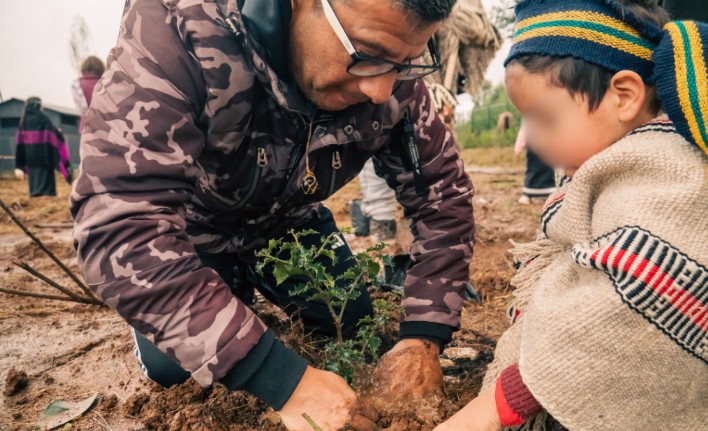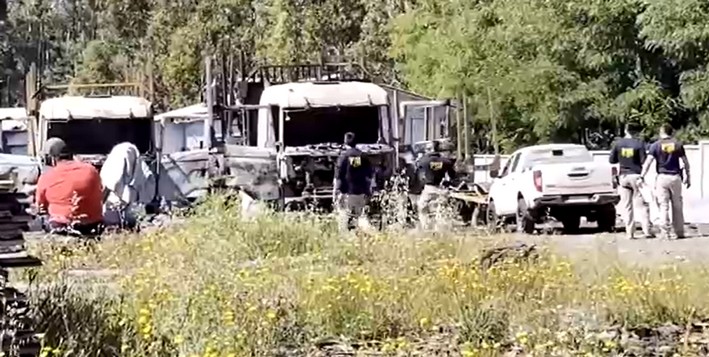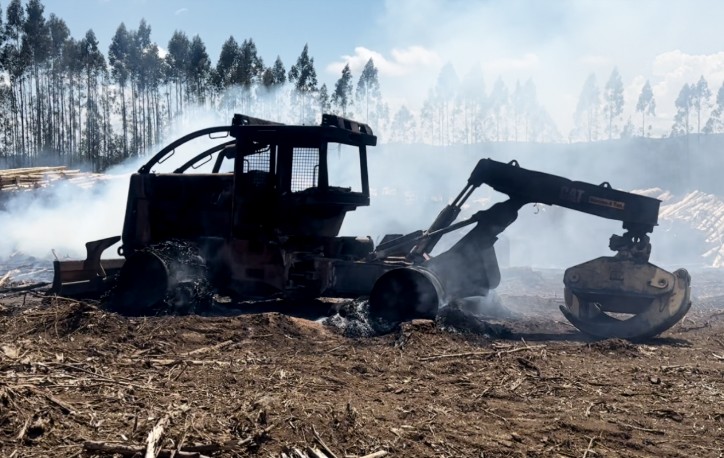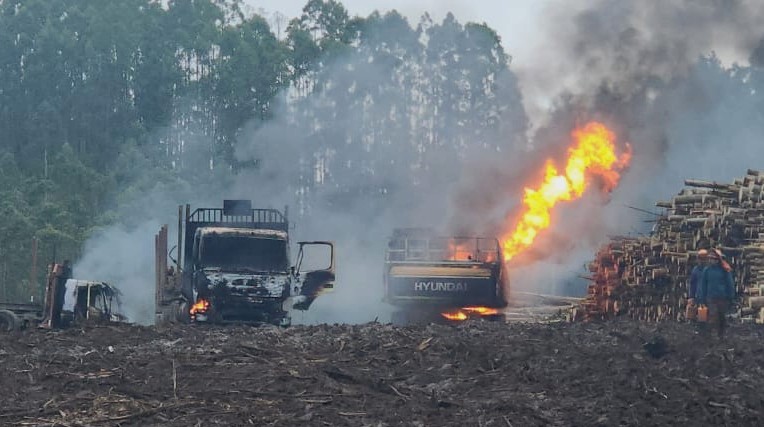Organizations in Biobío Collaborate for the Regeneration of Native Forests
As winter approaches, coordination efforts between the nursery at Parque Pedro del Río Zañartu, located in the commune of Hualpén, and civil society organizations (CSOs) of Bosquentrama are accelerating. This is the ideal time to plant native species, addressing needs such as restoring fire-degraded soils, halting the expansion of monoculture plantations, and promoting environmental education for children in their natural surroundings.
The recovery of native forests at the regional level is a priority for Parque Pedro del Río Zañartu and its nursery, which is situated within the Hualpén Peninsula Nature Sanctuary. Among the donated native species are peumos, naranjillos, pelúes, arrayanes, corcolenes, pitaos, maitenes, and quillayes, among others.
CSOs are organizing to reforest areas affected by mega-fires in the communes of Santa Juana and Tomé. Diego Aguilera, the nursery’s technical advisor, explains that the goal is to prioritize endangered and endemic species from the Biobío River basin forests.
These specimens were distributed to various organizations. "It was a powerful process that allowed us to connect with other groups seeking plants for purposes aligned with ours—propagating these species to restore native forests across the region," Aguilera noted.
In a virtuous cycle, recipient organizations offered to collect seeds in their territories, reinforcing the established partnership.
RESTORING THE LANDSCAPE
Among the CSOs are Oficios de Nahuelbuta, Mulchén Consciente, Parque para Penco, Asociación Indígena Newentuche, Agrupación Eco-Cóndores, Fundación Patrimonio Reverdecer, and Fundación Pongo, which have already carried out collaborative planting efforts in June.
One of Oficios de Nahuelbuta’s main motivations is restoring landscapes scarred by mega-fires in Santa Juana, while Mulchén Consciente focuses on educational activities in schools.
In the commune of Antuco, organizations like the Asociación Indígena Newentuche have joined, expressing concern for native forests, particularly illegal logging and environmental conflicts such as the diversion of the Laja River.
Meanwhile, Fundación Pongo channeled donations to groups like Laderamar and initiatives such as Rocamadre. These groups organized planting events with mingas (communal work) and participated in educational activities about native forest recovery.
TACKLING DROUGHT
The Volcán Antuco School in Villa Los Canelos joined through efforts by Eco-Cóndores de Abanico and the Asociación Indígena Newentuche. The community aimed to beautify their surroundings with native plants while preparing for drought seasons.
"Water is scarce here, so we considered planting with nopal pads and compost," said Pablo Suárez, a teacher at the school, hoping these species "improve water retention during summer droughts."
in summer."
In Villa Los Canelos, children are seen as ecological stewards. "We live in a privileged natural setting where kids recognize most of the planted species. They understand this initiative helps the ecosystem, stabilizes the soil, and enhances fertility," he emphasized.
POLICIES TO PROTECT NATIVE FORESTS
Mulchén Consciente received 50 plants, including arrayanes, huillipatagua, and peumos, for rural schools in Pilguén and Alhuelemu, which serve Indigenous students.
"Mulchén spans 1,900 square kilometers, with nearly 50% forest use degrading native ecosystems. While the land is highly degraded, restoration opportunities exist—that’s why we engage in these initiatives," said Álvaro González, leader of Mulchén Consciente and an environmental educator.
He explained that teaching about these species requires identifying "small remnants of native forests, as they provide the ecosystem services we should all benefit from."
The Alhuelemu School organized a collective planting during We Tripantu (Mapuche New Year), a time of deep connection with nature. Indigenous community members, students, parents, authorities, and representatives from the National Sports Institute and the municipality participated.
Improving these environments is a daily concern for these organizations, which also see room for better forestry regulations.
"First, we must identify remaining patches of native forest and legally protect them. But a signed paper isn’t enough—communities should study, value, and take ownership of them," González stressed.
He also called for clear penalties for violators and stronger enforcement to ensure regulations translate into effective natural heritage protection.
Source:La Tribuna









